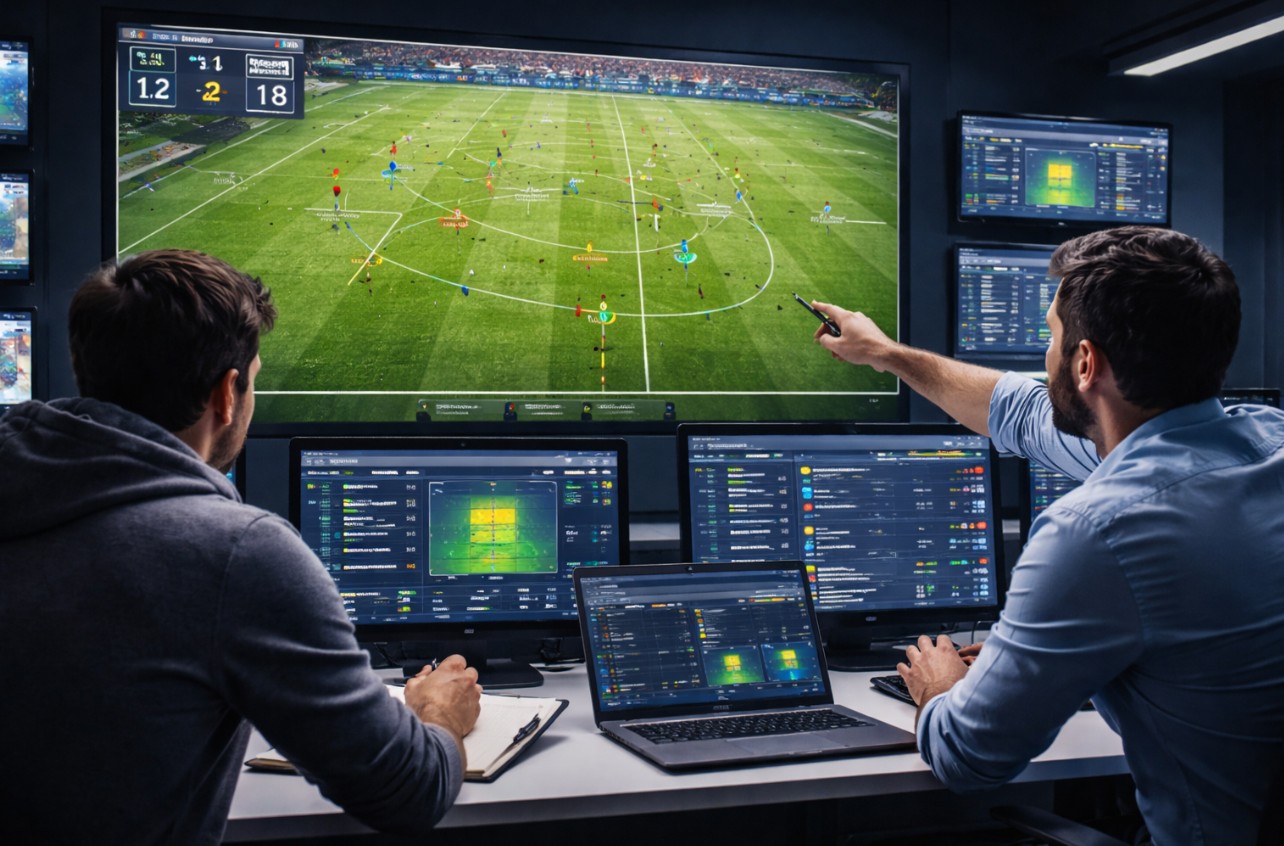Squat Jump and 3-Hurdle Drills: 2 Must-Do Plyometric Exercises to Improve Football Skills
Plyometrics, often called plyos, is a kind of expl

Plyometrics, often called plyos, is a kind of explosive exercise that specifically trains muscles to generate more power. In short, plyometric training equals strength plus speed. It involves muscle stretch that is immediately succeeded by contraction of the similar muscle.
The goal is plyometrics training is to train for the utmost force production within the shortest time frame. Hence, repetitions are often low, whereas effort and intensity must remain high. It can be used to train different parts of your body, but mostly focus on jumps and utilize muscles in the lower extremities. The same reason why it’s called ‘jump training’ as well.
Plyometric training improves speed, power, coordination, and agility, which are all necessary skills in football. With a smart plyometric training plan and guide from your coach, you can sprint faster, change directions quickly, and respond on time during your football game.
Here are a few of plyometric exercises you can do in your football training.
Squat Jump
Another reason why football players need to do plyometric exercises is that this sport requires a lot of sprinting, which often needs explosive powers from the muscles. One typical and effective way to develop explosive power is through squat jumps. Plus, it is pretty convenient as it only uses the player’s body weight.
Squat jumps train one’s core, glutes, hamstrings, and lower back. Studies even show that squat jumps are beneficial to anyone, including children as young as five years old. The exercise will improve not only the children’s kicking and running abilities, but also their agility and balance.
Here’s a basic routine in doing squat jumps:
- Stand with feet shoulder-width. Place your hands behind your head.
- Do a squatting position, with your knees slightly bent. Hold the position for two seconds.
- After two seconds, powerfully jump vertically straight up. While in midair, bring your knees toward your chest. Your things should reach your torso at the top of the jump.
- To prepare for landing, pull your toes to your shins midair.
- Land softly. Go through your foot (toes, arches, ball, and heel) and with your hips back and down. Descend into the starting position again.
- Hold the starting position again for 3 seconds. (However, this may vary depending on the trainer. Others may start the next jump immediately after landing.)
Moreover, there are a few common mistakes that people do when doing squat jumps, which are as follows:
- Performing it with no warm-up. Squat jumps are considered a dynamic power move. Hence, start with brisk walking, jump roping, or jogging to get rid of cold muscles.
- Overdoing it. While it is addicting to perform an exercise that is fun and effective, fight the urge to overdoing squat jumps as it can overuse or leave an excessive impact on your joints. Preferably, do it once a week.
- Performing it on a hard surface. Do not perform squat jumps on concrete, but rather do this drills on a soft and flat surface like grounds.
- Performing it while adding extra weight. Weightlifting is often with squats, but not with squat jumps. A study of the Journal of Strength and Conditioning Research discovered that adding extra weight while doing squat jumps offer no extra benefits.
3-Hurdle Drills
The 3-Hurdle drill is one of the best pre-workout routines that does not only warm your body up but also improve a player’s lower body power and stride length. As a result, you will be able to increase your acceleration and top speed. In a 3-hurdle drill, generally, the players need to top over hurdles, (either short or tall), with only minimal touches in between each.
The following are three mini hurdle drills that will surely increase your speed at the end of the training:
1. Stride Length Drill
- stride length refers to the distance in which your legs hits the ground while running
- stride length and stride frequency play a role in your sprinting speed
- improves sprinting speed while in contact with the ground
Sets:
- 3-5 sets
Set-up:
- Align four to six hurdles beginning at 18 inches, increase distance by adding six inches between each subsequent hurdle
Instructions:
- Start with a pose where your feet staggered, hip-width
- Keep back flat, hips pushed back, and knees slightly flexed
- Sprint through hurdles, five to 10 yards after the last hurdle, just one footstep between each hurdle
2. Ankle Hops
- develops the reactive strength of your ankles, feet, and calves by letting you jump through ankle flexion explosively
- allows you to get off the ground faster with minimum knee bend and transfer power into the ground more efficiently
Sets:
- 3-5 times on your sprinting days after your sprints
Set-up
- Align 8-12 hurdles in a straight line, one foot apart
Instructions:
- Stand feet together with arms at sides
- Use ankle flexors and your feet and to jump as high as possible, while keeping legs completely straight
- Repeat jumping immediately upon landing and do not bend knees
- If possible, spend less time on the ground
3. Hurdle Hops
- improves the gear ratio of your ankles and feet so you can sprint faster, jump better, and minimize or avoid non-contact injuries
Sets:
- 3-5 times either during sprinting or plyometrics training
- if for sprinting training, do it after sprints
- if for plyometrics workouts, do it after warm-up
Set up:
- Align four to six hurdles in a straight line, three to four feet apart
Instructions:
- Stand feet together in front of a hurdle
- Apply the touch-and-go method, where you will jump over a hurdle, land, and quickly jump over to the next one
In most ball games and body contact sports, there is a higher chance of beating the other team if the movements of your players are swifter than the opposing team. Speed skills are necessary for most sports, especially in football. Hence, there is a need to train how to move laterally in preparation for the constant directional changes that possibly happen on the field.







